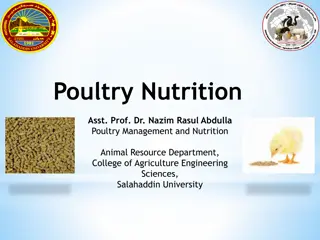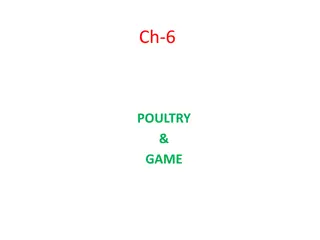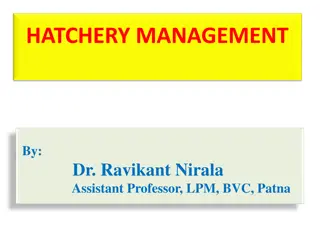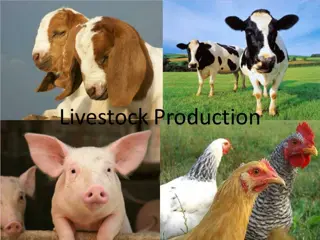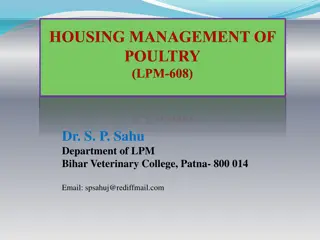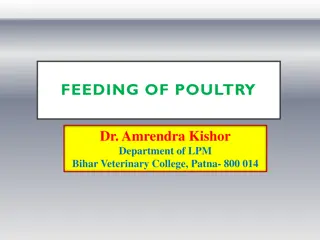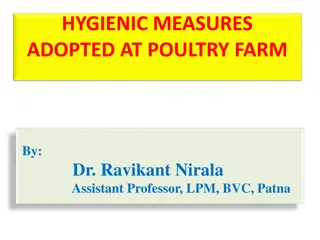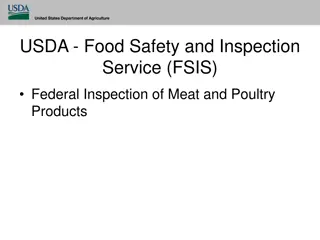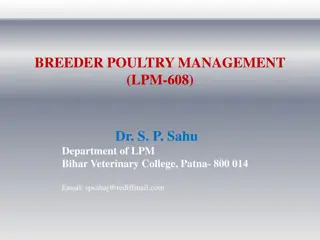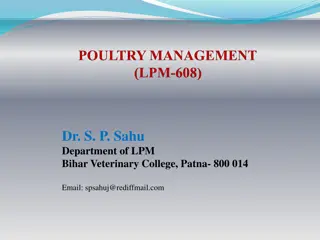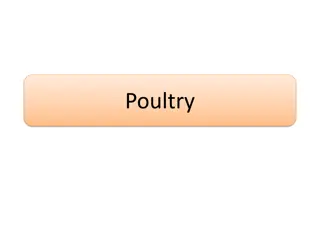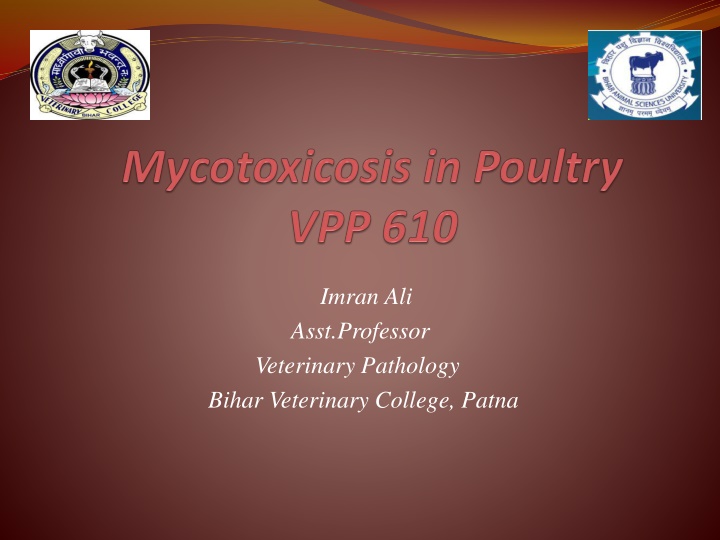
Aflatoxicosis in Poultry: Harmful Effects and Pathogenesis
Learn about aflatoxicosis in poultry caused by mycotoxins from fungi, specifically aflatoxins produced by Aspergillus species. Discover the sources of contamination, harmful effects on weight gain, feed intake, reproductive performance, and immunity, as well as the pathogenesis affecting liver, kidney, heart, and immune system.
Download Presentation

Please find below an Image/Link to download the presentation.
The content on the website is provided AS IS for your information and personal use only. It may not be sold, licensed, or shared on other websites without obtaining consent from the author. If you encounter any issues during the download, it is possible that the publisher has removed the file from their server.
You are allowed to download the files provided on this website for personal or commercial use, subject to the condition that they are used lawfully. All files are the property of their respective owners.
The content on the website is provided AS IS for your information and personal use only. It may not be sold, licensed, or shared on other websites without obtaining consent from the author.
E N D
Presentation Transcript
Imran Ali Asst.Professor Veterinary Pathology Bihar Veterinary College, Patna
The fungi has been known to secondary toxic metabolites i.e. mycotoxicosis Compound of such toxin leads to development of disease syndrome is known as mycotoxicosis
Sources: Ground nut cake and maize are most common source of mycotoxicosis.
AFLATOXICOSIS Aflatoxins are highly toxic mycotoxins produced by various species of fungus Aspergillus. The fungus produces aflatoxin in warm, high humidity conditions, such as rainy season. Aflatoxins can withstand extreme environmental conditions and are very heat stable. Aflatoxincontamination is therefore more common in grains in a tropical country like ours. Young birds are more sensitive to aflatoxin than adults.
Harmful Effects of Aflatoxin Affects weight gain Affects feed intake Affects feed conversion efficiency Affects egg production Affects male and female reproductive performance Increases susceptibility to infectious diseases due to immuno suppression. That is, suppression of the immune response.
Egg size, yolk weight, and yolk as percentage of total egg size, are decreased. Even less than 100 ppb in broilers, can result in poor feed conversion and reduced weight gain, which may be due to liver damage and reduced nutrient absorption.
Pathogenesis Aflatoxin are observed in intestinal tract. Liver cells take up the AF from blood . Liver show fatty changes, congestion, necrosis and proliferation of bile duct epithelium. Fibrosis may developed. Kidney may also show swelling,necrosisand glomerulo filtration.
Bursa of Fabricious may be atrophied. Heart muscle haemorrhages. AF symptoms the immune system leading to increase susceptibility to disease.
Symptoms In growing birds, there is decreased growth and poor feed conversion. There is also marked decrease in the resistance of birds to infections, such as coccidiosis and IBD due to immunosuppression. Affected hens have decreased egg production. Also, the hatchability of eggs is reduced.
Postmortem Findings Liver is greatly enlarged, yellow and friable (easily broken) Small haemorrhages may occur due to increased fragility of minute blood vessels. known as 'bloody thigh syndrome'.
Diagnosis Symptoms and postmortem findings would indicate aflatoxicosis. Confirmation requires identification of the level of toxin present in the feed.
. Contaminated corn showing severe fungal infection.
Aflatoxicosis. Note pale liver of a chicken (on right) receiving 200 ppb aflatoxin in feed. Compare it with the normal liver on the left.
Diarrhea in chick fed fusariotoxin (Courtesy of Dr. Fred Hoerr)




